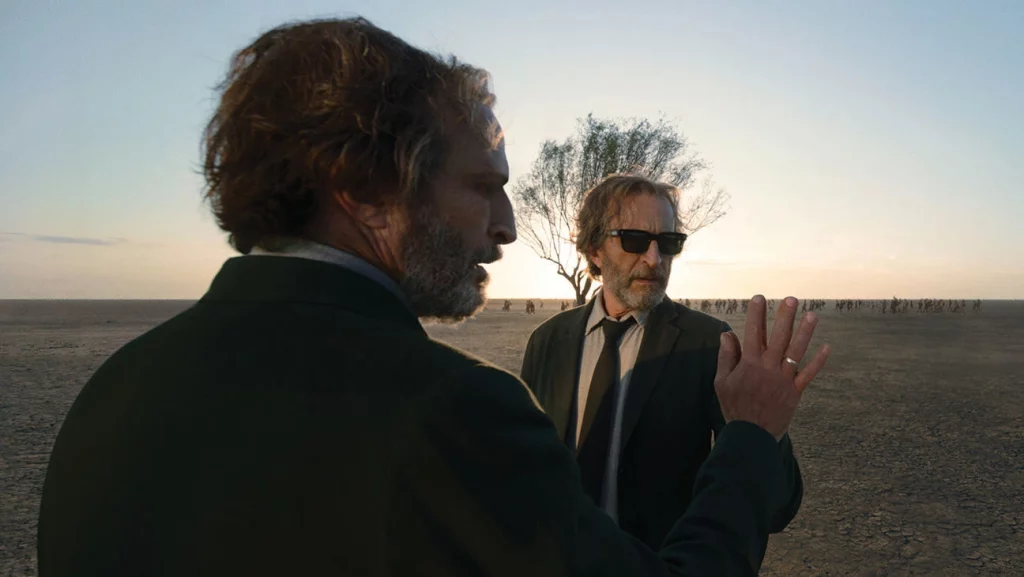An Interview with Writer/Director Albert Acosta
We sat down with Writer/Director Albert Acosta to discuss his debut short film, (ha-ha), Acosta's foray into narrative cinema, and how his personal experiences have shaped his filmmaking philosophy.


Bardo, False Chronicle of a Handful of Truths is the most recent shining example that disproves the old adage “numbers don’t lie.” I’m thinking, of course, of the oft-misleading and perennially dubious Rotten Tomatoes score that too often decides the viewing fate of commercially released films today. Alejandro G. Iñárritu’s latest film currently holds a 56% on the review aggregator, a failing grade in the American public school system. It’s a shamefully low number and a criminally inaccurate representation of its quality; the only boon the rating serves is to temper expectations and disarm a willing viewer as they enter a surrealist cinescape most reminiscent of Federico Fellini’s 8 ½. The stylistic similarities are impossible to ignore, and the subjectivity of a revered filmmaker, the focal point in 8 ½ and Bardo, is amplified to the nth degree in Iñárritu’s film. It is through the keyhole of a single clever plot point—obscured behind the veil of memory but at all times right before our eyes—that Iñárritu serves us a portrait of a life lived in Bardo, a Buddhist transitional state, where a single person dissolves into everything and nothing at once.
The film places the viewer into the mind (as literally as possible through the cinematic medium) of a fictional documentary filmmaker, Silverio Gacho (Daniel Giménez Cacho), a stand-in for Iñárritu. Silverio harbors a love-hate relationship with his mother country, Mexico. His decision to raise his children north of the border colors his relationship with his family and the citizenship he claims. Widely revered for his work, Silverio prepares to accept a prestigious American award for journalism following the release of his film, entitled “False Chronicle of a Handful of Truths.” Scenes from his film are melded seamlessly into the larger narrative, alongside Silverios personal memories, and prove to be visceral reckonings with his own familial life and his relationship to his Mexican identity. The film is endlessly self-referential, nonchronological, and completely oneiric from minute one. Darius Khondi’s cinematography, full of long takes, point of view perspectives, strategically placed mirrors, and large-format, wide-angle shots, nicely accommodate the intricately choreographed scenes of bacchanalia and emphasize the individual character’s power or insignificance in different environments.

The film is so wholly committed to its protagonist’s inner consciousness—the dichotomy of simultaneously loving and critiquing his motherland, the fragility of ego that keeps him from defending his work on live television, the death of a baby that he and his wife, Lucía (Griselda Siciliani), carry with them, and his responsibility to their two children—that it would be a disservice to watch it bound by any preconceived notions of reality as it is depicted on screen. The creative liberties to reframe the world as we know it are many and render everything from the most mundane to profound experiences, uniquely unfamiliar. Dialogue is alternately spoken and transmitted between characters telepathically. Hernán Cortés, the infamous conquistador, serves as a passing interlocutor for Silverio’s dilemma of national identity. Silverio, in conversations with his father, appears as a gray-haired man with the stature of a child. A fetus lies wrapped in silk, cradled in an egg-shaped urn. Intricate scenes play out only to be revealed as fabrications, humiliating fantasies, or grand recreations with varying degrees of veracity.
Silverio describes his own film-within-the-film as docufiction, a genre that allows him to raise the dead for cathartic resolutions and present his own body as a space for a cultural battleground, an autonomous agent upon whom conflicting histories are at war. In Iñárritu’s version of a False Chronicle of a Handful of Truths, the personal transcends the limits of the solitary human form and exists beyond the parameters of theaters, apartments, and soundstages vibrant with life. A single person cannot help but contain multitudes, Iñárritu seems to say, and it’s a wonder that any of us should ever feel certain that we are merely one single thing. As a stand-in for the director reckoning with his identity and past, Silverio exists in a transitional space, claiming two homelands but belonging wholly to neither, suspended in a place between birth and death where the fickleness of memory and the immutable truths of the past, constantly at odds, fuse to create the very stuff of a life lived.
Related lists created by the same author
We sat down with Writer/Director Albert Acosta to discuss his debut short film, (ha-ha), Acosta's foray into narrative cinema, and how his personal experiences have shaped his filmmaking philosophy.
Related diversity category
In season 3 of 'Umbrella Academy', Diego, Allison, and Viktor finally get character arcs that address their unique experiences as a Latino man, a Black woman who lived through the 60s, and a trans man.
Related movie/TV/List/Topic
'Airplane Mode' is a young adult movie that is about a woman who learns to step away from her smartphone, and from social media.